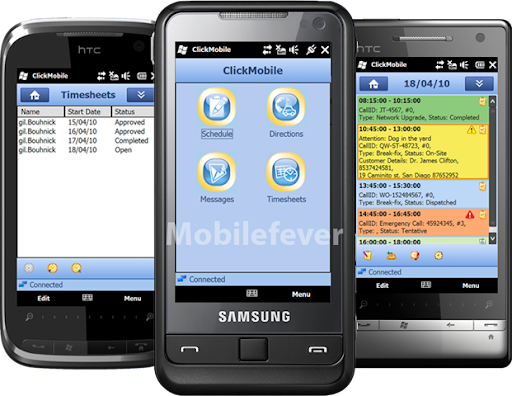Generations of Computer
The development of electronic computers can be divided into generations depending upon the technologies used. The generations of computers are as follows:
· First generation (Vacuum tube) 1942-1955
· Second generation (Transistor) 1955-1964
· Third generate (Integrated Circuits) 1964-1975
· Fourth generation (Microprocessor) 1975-Present
· Fifth generation (Artificial intelligence) Present and Beyond
1 First Generation Computer (1942-1955)
The beginning of commercial computer age is from UNIVAC (Universal Automatic Computer). It was developed by two scientists MAUCHLY and ECHERT at the Census Department of United States in 1947.
First generation computers were used during 1942-1955. They were based on vacuum tubes. Examples of first generation computers are ENIVAC and UNIVAC-I etc.
Advantages
· Vacuum tubes were the only electronic component available during those days.
· Vacuum tubes technology made possible to make electronic digital computers.
· These computers could calculate data in millisecond.
Disadvantages
· These computers were very large in size
· They consumed a large amount of energy
· They heated very soon due to thousand of vacuum tubes
· They were not very reliable
· Air conditioning was required
· Constant maintenance was required
· Non-portable
· Costly commercial production
· Limited commercial use
· Quite slow speed
· Limited programming capabilities
· Used Machine language only
· Used magnetic drums which provide very less facility of data storage
· Punch cards for input
· Not versatile
· Very faulty
2 Second Generation Computers (1955-1964)
The second generation computers used transistors. The scientists of Bell Laboratories developed transistor in 1947. These scientists include John Bardeen, William Brattain and William Shockley. The size of computer was decreased be replacing vacuum tubes by transistors. The examples of second-generation computers are IBM 7094 series, IBM 1400 series and CDC 164 etc.
Advantages
· Smaller in size as compared to first generation computers
· More reliable
· More energy-efficient
· Used less energy and were not heated
· Wider commercial use
· Better portability
· Better speed, could calculate data in microsecond
· Used faster peripherals like tape drives, magnetic disks, printer etc
· Used Assembly language instead of Machine language
· Accuracy improved
Disadvantages
· Air conditioning was required
· Constant maintenance was required
· Commercial production was difficult
· Only used for specific purposes
· Costly
· Not versatile
· Punch cards were used for input
3 Third Generation Computers (1964-1975)
The third generation computers used integrated circuits (IC). Jack Kilby developed the concept of integrated circuit in 1958. It was an important invention in computer field. The first IC was invented and used in 1961. The size of an IC is about ¼ square inch. A single IC chip may contain thousands of transistors. The computer became smaller in size, faster, more reliable and less expensive. The examples of third-generation computers are IBM 370, IBM System/360, UNIVAC 1108 and UNIVAC 9000 etc.
Advantages
· Smaller in size as compared to previous generation
· More reliable
· Less energy used.
· Produced less heat as compared to previous generation computers
· More good speed, could calculate data in nine seconds.
· Used fan for heat discharge to prevent damage.
· Maintenance cost was low because hardware failure is rare.
· Totally general purpose
· Could be used for high-level languages
· Good storage
· Versatile too an extent
· Less expensive
· Better accuracy
· Commercial production increased
· Used mouse, Keyboard for input
Disadvantages
· Air conditioning was required
· High sophisticated technology required for the manufacturing of IC Chips.
4 Fourth Generation Computers (1975-Present)
The fourth generation computers started with the invention of microprocessor. The microprocessor contains thousands of ICs. Ted Hoff produced the first microprocessor in 1971 for Intel. It was known as Intel 4004. The technology of integrated circuits improved rapidly. The LSI (Large Scale Integration) circuit and VLSI (Very Large Scale Integration) circuit were designed.
Microprocessor revolutionized the computer world. It greatly reduced the size of computer. The size of modern microprocessors is usually one square inch. It can contain millions of electronic circuits. The examples of fourth generation computers are Apple Macintosh and IBM PC.
Advantages
· Very small in size
· Less power consumption
· Less heat generated
· Fan for heat discharging and this to keep cold
· No air conditioning is required
· Best speed to read instructions i.e. one billionth per second
· Reliable and Powerful
· Totally general purpose
· Commercial of repairing
· Cheapest among all generations
· All types of high-level languages can be used in this type of computers
Disadvantages
· High sophisticated technology required for manufacturing microprocessors
5 Fifth Generation (Present and Beyond)
Scientists are now working on the 5th generation computers using recent engineering advances. It is based on the technique of artificial intelligence (AI). Computers can understand spoken words instructions and imitate human reasoning. The ability to translate a foreign language is also moderately possible with fifth generation computer.
Scientists are working to increase the speed of the computer. They are trying to create a computer with real IQ with the help of advanced programming and technologies. The advancement in modern technologies will revolutionize the computer in future. 
 20:33
20:33
 ATAUMER
ATAUMER
 06:08
06:08
 ATAUMER
ATAUMER
 06:07
06:07
 ATAUMER
ATAUMER
 23:49
23:49
 ATAUMER
ATAUMER


